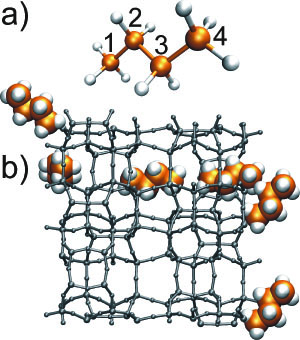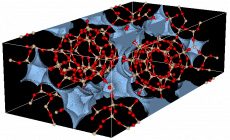New Materials Design

In chemistry and material science, it is important to understand what molecules have access to particular sites in chemical systems. For example, a substrate has to have access to an active site of an enzyme (catalyst) before the enzymatic (catalytic) reaction can take place. The “accessible volume” which is available to a penetrating molecule is useful in discussing physical properties such as diffusion, viscosity, and electrical conductivity in glasses, polymers, and porous materials. Predicting if a molecule can traverse chemical labyrinths of channels usually requires performing computationally intensive molecular dynamics simulations.
Since it is impractical to test each molecule/labyrinth pair using computationally expensive methods, we have built sophisticated algorithms to explore geometric configurations and prune possibilities, using a moving “molecular worm” assembled from solid blocks connected by flexible structures, and which can then compute accessible regions using a variant of Fast Marching Methods. Jointly with the Berkeley Lab EFRC (Energy Frontier Research Center), we are using these techniques to prune detailed zeolite databases for potential materials for carbon sequestration.
About Berkeley Lab
Founded in 1931 on the belief that the biggest scientific challenges are best addressed by teams, Lawrence Berkeley National Laboratory and its scientists have been recognized with 16 Nobel Prizes. Today, Berkeley Lab researchers develop sustainable energy and environmental solutions, create useful new materials, advance the frontiers of computing, and probe the mysteries of life, matter, and the universe. Scientists from around the world rely on the Lab’s facilities for their own discovery science. Berkeley Lab is a multiprogram national laboratory, managed by the University of California for the U.S. Department of Energy’s Office of Science.
DOE’s Office of Science is the single largest supporter of basic research in the physical sciences in the United States, and is working to address some of the most pressing challenges of our time. For more information, please visit energy.gov/science.










